#Bird in a Box
Explore tagged Tumblr posts
Text
youtube
Recently learned that in 2012 Fiona Glascott was in this weird little Black Mirror-ish short film with Brian d’Arcy James, and immediately thought of my Broadway Julia friends @droughtofapathy and @voltives
Only one degree of separation from Kelli 😌
6 notes
·
View notes
Text

airplane nest box live cam waiting for the weans to hatch
6K notes
·
View notes
Text


little boy with only a wooden block to rest his head on
#Rossi rat#for context this is a dig box there are 3000 blankets and hammocks in the rat cage#rats#not birds
714 notes
·
View notes
Text
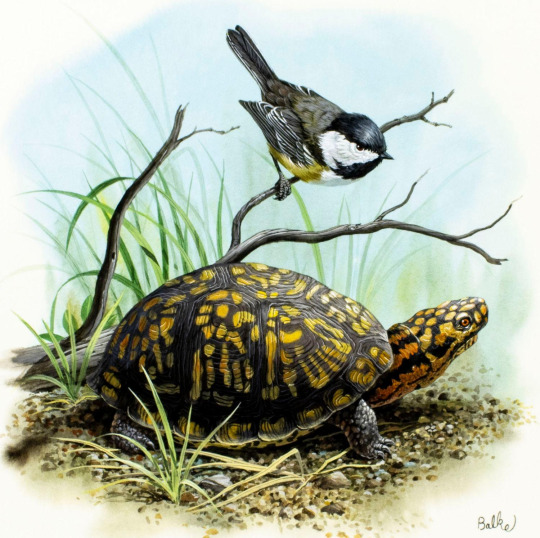
Don Balke (b. 1933), Turtle, 1986, gouache on board.
Invaluable
#reptiles#turtles#box turtles#eastern box turtle#birds#passerines#chickadees#carolina chickadee#Don Balke
508 notes
·
View notes
Text

And while I'm posting today's birds, here's one of two tree swallows I saw up at the cemetery outside town where they always return this time of year. Of course I love seeing them at the lake an hour away where there are loads of them but there's also something heart-lifting about seeing them faithfully returning to this one wooden box high on the hill every year. 💙
#pennsylvania#birds#swallows#tree swallows#april#early spring#especially since the boxes they used to nest in down at the park got bulldozed along with most of the marsh#tachycineta bicolor
166 notes
·
View notes
Text
Please, don't pick birds up off the street if you do not have a plan to get them medical care. Hell, just don't. So many people grab birds that are young and simply waiting for mom and dad to come home. It's so easy to be wrong.
And if you don't have a plan to get a seriously ill bird medical treatment by a professional, please know what that means. Do not apply an anthropomorphic lens. Extending the life of a bird that is going to die, no matter what you do, doesn't give it some extra meaning or enrich the memory of the bird or make it poetic or however you might be viewing it with rose-colored glasses.
It's an extension of suffering. It's not beautiful. It's wrong. Don't pick up a bird you are not prepared to deal with paying a vet to euthanize. Or a rehabber, if you're lucky. You HAVE to have access to a humane end for these poor things before you pick them up and drag their pain out another 3 days.
I know people just want to help. I beg you to recognize when that is possible and ethical, in the best interests of the creature you want to help.
This is just a general plea. I see a lot of picked up pigeons and a similarly large quantity of poor decisions surrounding those pickups.
Have a plan, a plan that is RIGHT FOR THE BIRD, or keep moving.
Sometimes decisions aren't easy.
#death cw#illness cw#animal illness#begging with my heart in my hands#i dont want to walk past them either#but dying in a box three days later is not better#its different if you are seeing a vet and the bird passes#but just going home and waiting for the bird to die? has to stop
543 notes
·
View notes
Text

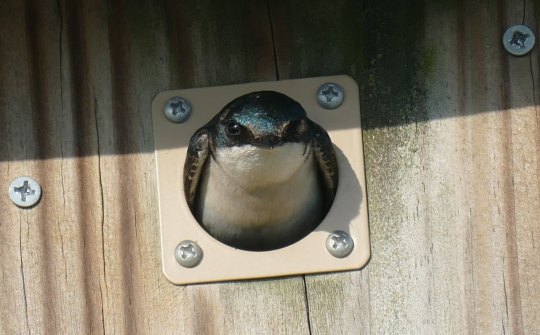


Tree Swallow, lining up perfectly with the shadow of its nesting box.
photos by me. 2024-04-26 Shelby Bottoms (Nashville, TN)
#mine#birds#tree swallow#nesting box#(just to be clear—this nesting box is 3-ft off the trail; nonetheless I still maintained my distance and used a zoom)#birdblr#birblr#bird photography#tree swallows
1K notes
·
View notes
Text
Things to Do that Aren't Related to Growing Plants
This is my second post in a series I’ll be making on how to increase biodiversity on a budget! I’m not an expert--just an enthusiast--but I hope something you find here helps!
Some of us just don’t have much luck when it comes to growing plants. Some of us simply want to aim for other ways to help that don’t involve putting on gardening gloves. Maybe you've already got a garden, but you want to do more. No problem! There’s a couple of options you can look into that’ll help attract wildlife in your area without even having to bring out any shovels!
Provide a Water Source
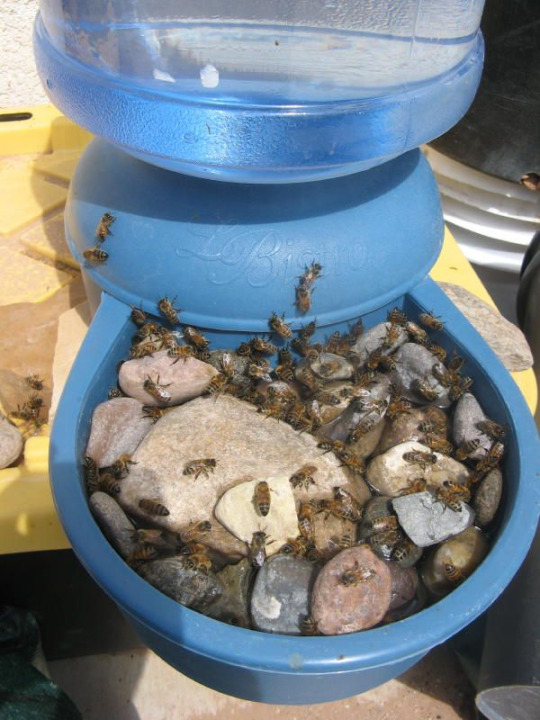
Oftentimes when I see ‘add a water source’ in informational articles about improving your backyard for wildlife, it’s almost always followed by an image of a gorgeous backyard pond with a waterfall and rock lining that looks expensive to set up, difficult to maintain, and overall just… not feasible for me. Arguably, not feasible for a lot of people. And that’s okay! There’s still ways to add water in your garden for all kinds of creatures to enjoy!
There’s tons of ways to create watering stations for insects like bees and butterflies. A self refilling dog bowl can work wonders! Add some stones into the receiving tray for insects to land on or use to climb out, and you’ve got a wonderful drinking spot for all kinds of insects! You can also fill a saucer or other dish with small stones and fill it, though it’ll likely need refilling daily or even several times a day during hot times.
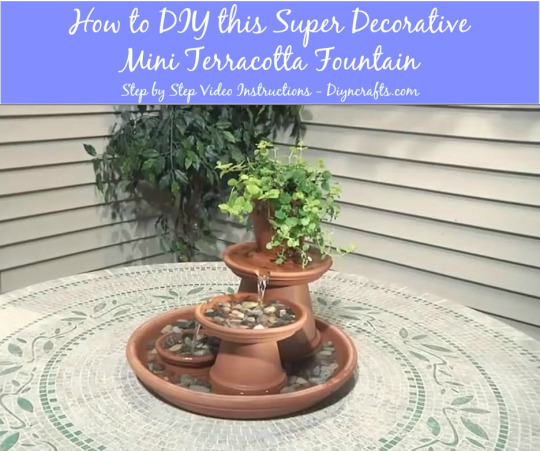
I've seen people online use all kinds of things to make water features. Some go with terra-cotta pots, pebbles, and a cheap pump to get a small and simple fountain. Others use old tires, clay, and a hole in the ground to create an in-ground mini pond system. If all else fails, even a bucket or watertight box with a few plants in it can do the trick--though do be wary of mosquitoes if the water isn’t moving. In situations like these, a solar-powered fountain pump or bubbler are great for keeping the water moving while still making it a drinking option for wildlife (it not even more appealing for some)--and these items can be obtained fairly cheap online!
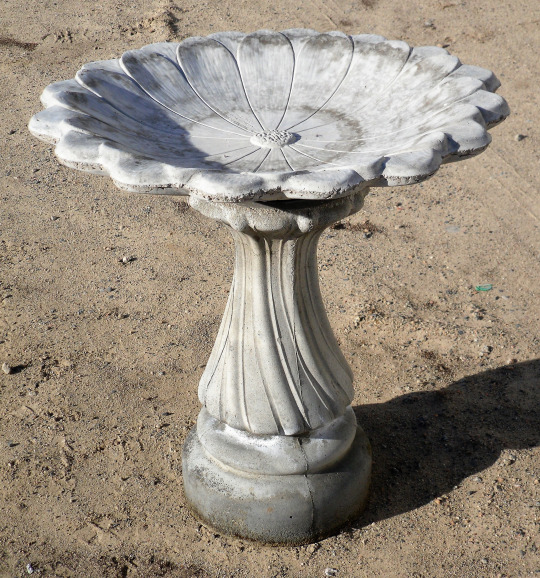
Bird baths are an option as well--a classic way to provide for birds in your area, they can be easy to find online or in a gardening store! The only downside is that a good, quality bird bath can be pricey up-front. However, a nice stone bird bath should last a long time, be easy to clean and refill, and be enjoyed by many birds! I’ve also seen tutorials on how to make your own with quickcrete! Bird baths will be a welcome sight to birds, as they provide a space for them to drink and bathe to regulate the oils in their feathers for flight and insulation. Putting a stone in the middle will also help insects to escape if they fall in, and provide a place to perch so they can get their own drink. You’ll want to change the water and clean the baths regularly--as often as once a week, if you can manage it.
If possible, it’s highly encouraged to fill and refill water features with rainwater instead of tap water. Tap water is often treated, so instead of using hoses or indoor kitchen water, collecting some rainwater is a great alternative. Collecting rainwater can be as simple as leaving cups, bins, or pots outside for awhile.
Butterflies and other creatures will also drink from mud puddles. If you can maintain an area of damp soil mixed with a small amount of salt or wood ash, this can be fantastic for them! Some plants also excel at storing water within their leaves and flowers (bromeliads come to mind), making them an excellent habitat for amphibians as well as a drinking spot for insects and birds.
Bird Feeders and Bird Houses
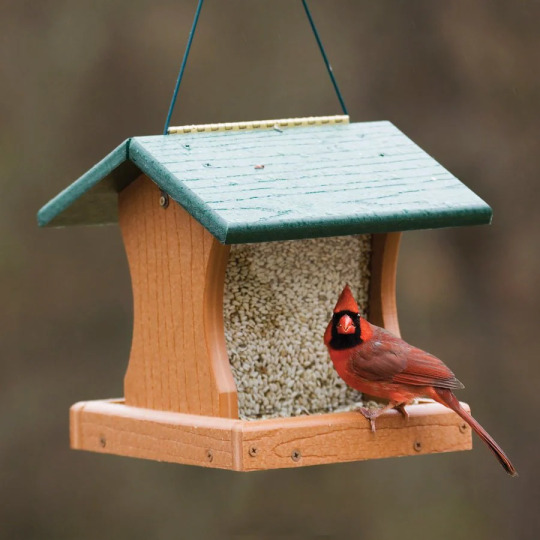
Some of the fancy, decorated bird feeders are expensive, but others can be pretty low-cost--I got my bird feeder from Lowe’s for around 10 dollars, and a big bag of birdseed was around another 10 dollars and has lasted several refills! If you don’t mind occasionally buying more birdseed, a single birdfeeder can do a lot to attract and support local birds! If you’re handy, have some spare wood, and have or can borrow some tools, you may even be able to find instructions online to make your own feeder. You may not even need wood to do so! Even hummingbird feeders, I’ve found, are quick to attract them, as long as you keep them stocked up on fresh sugar water in the spring and summer!
An important note with bird feeders is that you have to make sure you can clean them regularly. Otherwise, they may become a vector for disease, and we want to avoid causing harm whenever possible. Also keep an ear out and track if there’s known outbreaks of bird diseases in your area. If local birding societies and scientists are advising you take your birdfeeders down for awhile, by all means, do it!
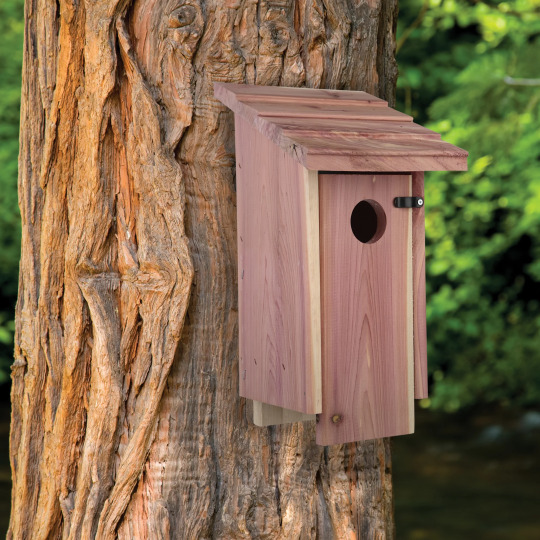
Bird houses are naturally paired with bird feeders as biodiversity promoters for backyard spaces, and it makes sense. Having bird houses suited to birds in your area promotes them to breed, raise their young, disperse seeds, and generally engage in your surrounding environment. Setting them up takes careful selection or construction, preparation, and some patience, but sooner or later you might get some little homemakers! Keep in mind, you will need to clean your birdhouses at least once a year (if not once per brood) to make sure they’re ready and safe for birds year after year--you wouldn’t want to promote disease and parasites, after all. But they could be a valuable option for your landscape, whether you purchase one or construct your own!
Again, do make sure you're putting up the right kind of boxes for the right kinds of birds. Bluebird boxes are some I see sold most commonly, but in my area I believe they're not even all that common--a nesting box for cardinals or chickadees would be far more likely to see success here! And some birds don't even nest in boxes--robins and some other birds are more likely to use a nesting shelf, instead! Research what birds live in your area, take note of any you see around already, and pick a few target species to make homes for!
Solitary Bee Houses
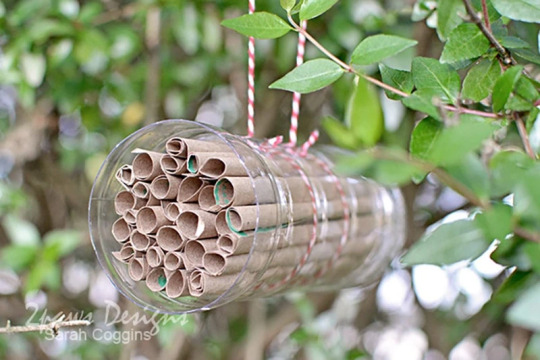
A bee house or bee hotel is a fantastic way to support the solitary bees in your area! For a few dollars and some annual cleaning, you can buy a solitary bee house from most big box nurseries. Alternatively, you can make one at home, with an array of materials you may already have lying around! You can even make them so that they’ll benefit all kinds of insects, and not necessarily just bees.
Though you don’t even necessarily have to break out the hammer and nails, buy a ton of bricks, or borrow a staple gun. Making homes for tunneling bees can be as simple as drilling holes in a log and erecting it, or drilling holes in stumps and dead trees on your property. You might even attract some woodpeckers by doing this!
Providing Nesting Area
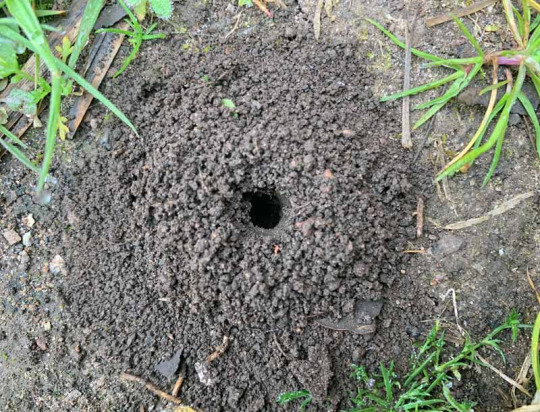
There are tons of different kinds of bees, and they all make different kinds of homes for themselves. Not all of them make big cavity hives like honey bees, or will utilize a solitary bee house. Bumblebees live in social hives underground, particularly in abandoned holes made by rodents--some others nest in abandoned bird nests, or cavities like hollow logs, spaces between rocks, compost piles, or unoccupied birdhouses. Borer, Ground, and Miner bees dig into bare, dry soil to create their nests. Sparsely-vegetated patches of soil in well-drained areas are great places to find them making their nests, so providing a similar habitat somewhere in the garden can encourage them to come! I do talk later in this document about mulching bare soil in a garden--however, leaving soil in sunny areas and south-facing slopes bare provides optimal ground nesting habitat. Some species prefer to nest at the base of plants, or loose sandy soil, or smooth-packed and flat bare ground. They’ve also been known to take advantage of soil piles, knocked over tree roots, wheel ruts in farm roads, baseball diamonds and golf course sand traps. You can create nesting ground by digging ditches or creating nesting mounds in well-drained, open, sunny areas with sandy or silty soil. However, artificially constructed ground nests may only have limited success.
Providing Alternative Pollinator Foods
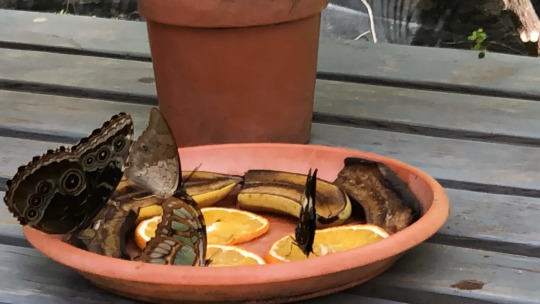
Nectar and pollen aren’t the only foods sought out by some pollinators! Some species of butterflies are known to flock to overripe fruit or honey water, so setting these out can be an excellent way to provide food to wildlife. You may want to be cautious about how you set these out, otherwise it can help other wildlife, like ants or raccoons. Butterflies may also drop by to visit a sponge in a dish of lightly salted water.
Bat Houses and Boxes
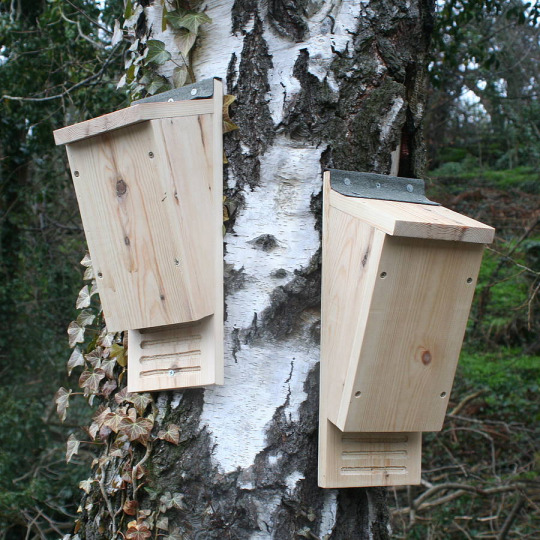
Big or small, whether they support five bats or five hundred, making bat boxes and supporting local bats is a great way to boost biodiversity! Not only will they eat mosquitoes and other pest species, but you may also be able to use the guano (bat droppings) as fertilizer! Do be careful if you choose to do that though--I’ve never had the opportunity to, so do some research into how strong it is and use it accordingly.
Provide Passageway Points
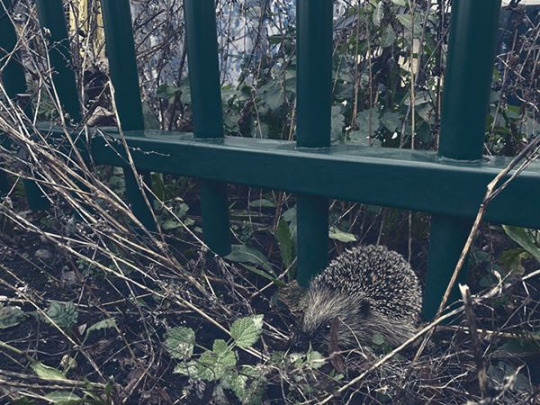
If you want your area to be more accessible for creatures that can’t fly or climb fences, allowing or creating access points can be an excellent way to give them a way in and out. Holes in the bottom of walls or fences can be sheltered with plants to allow animals through.
In a somewhat similar manner, if you’re adding a water fixture, it’s important to provide animals a way to get into and out of the pond--no way in, and they can’t use the water. No way out, and they may drown. Creating a naturalistic ramp out of wood beams or sticks, or stepped platforms out of bricks, stones, or logs can do the trick.
Get or Keep Logs and Brush Piles

I’ve already mentioned logs a good handful of times so far in this post. To be used as access ramps, or as nesting areas for solitary bees. But they have value as much more than that! Logs on the ground provide shelter for all kinds of animals, especially depending on size--anything from mice, reptiles, and amphibians to things like turkey vultures and bears will use fallen logs as shelter. Inside of a decaying log, there’s a lot of humidity, so amphibians are big fans of them--meanwhile, the upper sides of them can be used as sunning platforms by things like lizards. Other animals can also use the insides of logs as nest sites and hiding places from predators too big to fit inside. Fungi, spiders, beetles, termites, ants, grubs, worms, snails, slugs, and likely much more can be found inside rotting logs, using the rotting wood as food sources or nesting places. They can then provide food for mammals, amphibians, reptiles, and birds. They can also be regarded as a landmark or territory marker as wildlife get more familiar with your space.
So how do you get logs for cheap? Try Chip Drop! I talk about them more in a future post, but you can mark saying that you’d like logs in your drop, so they’ll give you any they have! In fact, you may even get a drop faster if you're willing to accept some logs. You may also be able to approach arborists you see working in your area and ask for logs. There may also be local online listings for people selling logs for cheap, or just trying to get rid of them. If there’s land development going on near you, you may be able to snag logs from trees they cut down to make space. Do keep in mind, you don’t need to have huge gigantic logs laying around your property to make an impact--even small logs can help a lot.
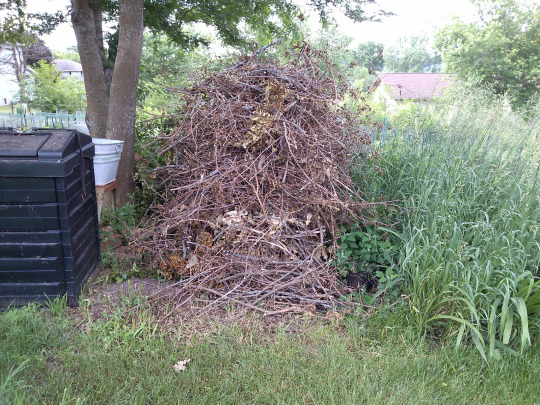
If possible, creating and leaving brush piles on the edge of your property can be a great boost to biodiversity--even if you may not see the wildlife using it. They’ll provide shelter from weather and predators, and lower portions are cool and shady for creatures to avoid the hot sun. The upper layers can be used as perch sites and nest sites for song birds, while lower layers are resting sites for amphibians and reptiles, and escape sites for many mammals. As the material decays, they also attract insects, and as such they’ll attract insect-eating animals too. As more small animals find refuse in your brush pile, their predators will be attracted to them as well. Owls, hawks, foxes, and coyotes are known to visit brush piles to hunt. Making a brush pile can be as simple as piling branches and leaves into a mound, as big or as small as you want. You can even use tree stumps or old fence posts near the base, and keep stacking on plant trimmings and fallen branches. Do note that you don’t want to do this near anything like a fire pit.
Don't forget, with all of these, your mileage may vary for any variation of reasons, so don't worry if you can't take all of even any of these actions! Even just talking about them with other people may inspire someone else to put out a bat box, or leave a few logs out for wildlife!
That's the end of this post! My next post is gonna be about ways to get seeds and plants as cheaply as possible. For now, I hope this advice helps! Feel free to reply with any questions, success stories, or anything you think I may have forgotten to add in!
#biodiversity#solarpunk#environmental stewardship#gardening#outdoor gardening#(i know this is literally the Dont Gotta Garden post but these could also be excellent additions to a preexisting garden so)#ani rambles#out of queue#the biodiversity saga#here in the tags to once again emphasize your mileage may vary with all of these#my mom is scared of bats theres no way in hell shes gonna let me put up a bat box#but I have been able to put out a shallow bird bath and a little solarpowered hummingbird bath fountain#do what you can! every bit counts! You may be able to do something that I or your neighbors can't!#for example my nextdoor neighbors have literally no trees in their backyard where the hell would they put a bat box#meanwhile i have trees in my backyard but still can't put up a bat box. maybe the neighbors next to me could!#similarly brush piles are a no go for my family but someone somewhere else could set one up!#i am rambling in the tags now uh long story short do what you can don't stress about what you can't
5K notes
·
View notes
Text
Singing Bird Box Almost 200 Year's Old
#music box#old toys#antique#birdlovers#birds song#omg#video#amazing#weird#strange#my video#hilarious#funny#lol#laugh
1K notes
·
View notes
Text
AFFECTION!!!!!!!!



I had this in mind for quite some time, but I uh... didn't even know how to embroider (I hate this word wtf). So it took me a while xd
Based on this post by @morn1e
#box art#postal#marnie#postal dude#postal 2#postal oc#this was so inspiring i had to ask my mom to teach me to even do this because I JUST HAD TO DO IT#my dear dear mother did not understand why her grown ass son was emboidering two fuck ass birds
87 notes
·
View notes
Text









trinket boxes with animals (AvaLucilles)
#avalucilles#transparent by me#etsy#vintage#trinket boxes#objects#pngs#transparent pngs#birds#cats#bears#dove#parrot#trinkets#items
229 notes
·
View notes
Text

Same walk this morning. I walked out of the woods on the northeast path instead of the others that I usually walk and it opens onto a low south-facing slope. Because of the warm sun from the south the whole slope was bare of snow and birds that can't easily find food when snow covers the ground were active there, including at least 5 bluebirds. There's a bluebird box nearby and despite it being January it looks like this bluebird pair have been getting busy! It's easy for us to forget, living our modern human lives, that once we're a month out from solstice the days are significantly longer and for nature that makes a difference. In a couple days it will be Imbolc, also know as St. Brigid (Brighid, Bridget)'s Day, halfway between solstice and in the northern hemisphere, spring equinox. Trees feel the warmer sun and longer days and sap starts to stir, making their leaf and flower buds swell. Not only did I see these bluebirds nesting and feeding young but for the first time since autumn I heard a cardinal singing its longer song, its love song, and titmice too changing their tune toward courtship. This is the very beginning of spring although the landscape won't be green until some time in April and most of the trees won't leaf out until May. We can still get lots of snow but underground and among the birds changes are happening.
#long post#pennsylvania#birds#bluebirds#birbs#sialia sialis#january#imbolc#st brigid#winter#nest box
206 notes
·
View notes
Text
Yandere Birdbox (3/5)

Word count; 3.8k
For the first time, Y/n had the concious thought about whether they could use their ability to see their surroundings. They always thought their blindness was a curse, but in the apolcolypse, it had come in usefully. Whether this was only an ability in their sleep, Y/n had yet to determine, but they hoped it wasn’t — Y/n didn’t see any other way to survive.
Y/n laid their head against the counter. They plugged their phone in, dreading the day when electricity was no longer available and Siri — Y/n’s only friend — was silenced. And then came the issue of food. They were stuck. Y’n couldn’t help but ponder death. They were aware of how generally awful they were as a person, and that kept Y/n with a will to live and a will to die.
Y/n was selfish, rude, and a coward. They were bitter at the world for being unfair and punished the people around them the same. Too selfish and afraid to die, but too hateful toward the world to live. It was a conundrum. Y/n figured, though, that their general confusion would be the death of them, as they were too confused on what to do. Y/n had their talents in a paintbrush, not a weapon. Y/n couldn’t see. Y/n hardly knew the area because their father often shipped groceries to their doorstep so Y/n only left the house for exhibitions, interviews, and art supplies.
Their father. Y/n sat up, grabbing the phone.
“Hey, Siri. Call dad.”
The phone began ringing. The screen was slightly cracked, but its not as though Y/n cared. The phone rang. And rang. And rang.
“The person you are trying to reach is unavailable. After the tone, please leave a message.”
A wave of sadness and worry washed over Y/n. They recognized that their father was the most important person in their life. Perhaps his phone was dead. Perhaps it was lost. Perhaps he was asleep.
Or perhaps he was dead.
For the first time since hell had descended on earth, Y/n began to cry. They wandered over to the couch to lay down, curling on their side. For the first time in a while, they thought of ‘Last Look’s dreadful day.
“Doctor, why can’t my child see? How can they get their sight back?” their father pleaded.
“Sir, I’m sory, We’ve ran several tests, but sometimes, things like this happen. A hidden gene. A faulty switch in the occipital lobe. Although there is still no noticable differences in their brain development, nerves, or blood work, cases like this happen. It’s unfortunate, and unfair. Sometimes, the eyes shut down entirely overnight from unknown causes. And, currently, we don’t have the technology to do anything about it.”
Their father’s eyebrows furrowed. Although Y/n couldn’t see it, he was losing hope. He wondered if he had somehow failed his only child.
“I… I did some research. They somehow made a young boy see again —“
“That was a scientific anomaly, sir,” the doctor argued desperately. “And anyway, this clinic is incapable of giving that kind of treatment.”
Y/n’s father began to sob. They are crying, too. The doctor’s words scared them. They clawed and rubbed at their eyes, but their father grabbed their hands, squeezing tightly. He comforted them, whispering sweet words that everything would be alright. That they would make due. That there was nothing wrong with being blind. That it wasn’t the end of the world.
But Y/n was only a child. Their entire future had been robbed. Y/n didn’t know of any blind heros. Anyone out there that made a living or lived independently. Y/n was uneducated. All they knew was that their world had ended, and that they wanted to see again.
And see they now did. Y/n shot up. It was but a blink, but they saw. It was like they physically transcended their body and walked to the door, going right through it. They reached for a canvas, their fingers tracing it like a memory. A man. Middle-aged, beer-bellied, straggling jawline, balding. Pale eyes with a daze. Pounding, over and over. His knuckles bleeding. His clothes torn and bloody. The woman’s corpse beside him, eyes torn open and from her skull, as though his fingers had dug into them to remove them personally. In the woman’s chest, there was an iron rod.
Y/n could still see it clearly. The man was really there, still pounding ruthlessly. Y/n had blocked out the knocking, but with sudden focus, their ears returned to the sound.
Knock. Knock. Knock.
They dropped the brush and went over to the kitchen. They pulled a knife from the drawe, removing the blade cover. The wind was still howling outside, pounding at the windows. They went over to the door.
Y/n suddenly found courage and a voice.
“How are you alive? Why are you here? How did you know I was here?”
The knocking stopped suddenly. With its absense, an eerie silence followed. Y/n suddenly regretted speaking up.
A gruff voice, enchanted yet ery, very dry and cracked, answered. “They showed me true beuty. They want me to show you. Let me give you my eyes, Y/n. I want to give you my eyes —“
“Why is everyone else dead but you? What’s doing all this?” Y/n’s voice was shaky yet steady.
“…Sinners. All of them. They did not want to see. But I do. You do. They want me to show you it all. Open the door, Y/n. Let me give you my eyes.”
“That’s impossible. I am blind. Please, leave me alone —“
“But you have the sight!” the man suddenly boomed. “They gave it to you a long, long time ago. And now, they will show you everything great and beautiful. Open the door. Open the door. Let me give you my eyes.”
Y/n only grew more confused with every sentence. Nothing made sense.
“How will you give me your eyes?”
Manic, cracked laughter ensued. “I will tear them from my skull and hand them to you. You must see it, Y/n. It is beautiful! Beautiful, I tell you! Open the door!”
“Leave your eyes at the doorstep. I will take them that way.”
“I wish to see you myself. They speak so highly of you. You are the most beautiful landscape of all. I must see you, Y/n. I must see you and hand you my eyes —!”
Shivers rolled down their spine and they took a step away from the door. Y/n was left with more questions than answers. The whole endeavor was pointless. However, Y/n knew that they couldn’t stand the knocking anymore. And they didn’t trust that this man would just die. Something supernatural had consumed the world. The man’s eyes weren’t normal. Perhaps his biology wasn’t, either.
With that, Y/n didn’t let the fear take over. They unlocked the front door and swung it open. The voice was no longer muffled. They aimed to stab, but the man suddenly bellowed and collapsed to his knees. The man was far more vocally gruesome with a door no longer seperating them. The man bowed.
His scarred, bloody hands touched Y/n’s feet. He scrambled and panted. Y/n is left stunned, allowing the man to grovel at their feet.
Sobs echoed the empty hallway.
And Y/n was shaking from head to toe.
“Oh, it’s beautiful!” he cried. “They were right! The most beautiful thing in creation!”
His praises fell on deaf ears. Rough hands squeezed Y/n’s feet and they felt overwhelming disgust, overpowering the fear. The hands clawe at their calves and then their thighs. Suddenly, he withdrew, falling silent. His face was drenched in sweat. He glistened with salt and oil. Tears continued to fall, and although Y/n did not know, his eyes were glued to their figure in awe.
And then, he began to claw. He dug his thumb and pointer finger into his eyelids. Y/n stumbled back, hearing the squelch. The man released painful gurgles. Slowly and painfully, he removed his eyes. The man sobbed desperately, and yet all he cried was blood.
Y/n felt a spray against their pants. Y/n had enough. Their selfish, angry side kicked in, adrenaline suddenly bursting through their veins. Gritting their teeth, they stabbed the man in the neck, somehow knowing exactly where to aim. The man gurgled out a cry, dropping his eyeballs and collapsing to the welcome mat. Y/n kicked the man away, feeling their socks get drenched with liquids. The man’s thud was the last sound he made.
Y/n felt around the corpse for the knife, disgusted. They removed it.
They slammed the door shut and locked it again.
The corpse sat there. The man lay there, decaying and wet. The eyeballs were completely seperated and long cords spun out from his eyes. Despite the pain he and Y/n had caused, the man was smiling.
Y/n was rattled to their core, turning and sliding down the door. Their hands had intense tremors. They knew damn well they couldn’t stay stuck. The wind was howling, harder and harder. The beast was near. And the insane missionary had found them once. Another one surely could.
Y/n stayed frozen on the floor, cradling the moist knife like a child, for a very, very long time. It was slowly settling on them that they had commited murder. It didn’t feel like self-defense. The man had worshipped them, for christ’s sake. They couldn’t help but wonder what would have happened, had they taken the eyes? What would they have seen?
They decided to think it over in the shower; they knew they had to move while they had the resources. Siri wouldn’t live forever. Their food supply wouldn’t last. They needed to find a grocery store to camp in — one that wouldn’t be too populated with hypothetical looters.
They also needed resolution on what happened to their father.
When they hopped out of the shower, they began to pack the essentials: their charger, phone, cane, clothing, food, and paints. Everything they’d need to survive, but also live.
Y/n’s first thought of where to go was the corner store down the block. It’s where they often went for an easy snack. Y/n took their cane and turned Siri on to the corner store. They shoved the phone in their pocket after plugging in earbuds.
They felt their way toward the elevator. Their ears were keen, but the hallway was silent.Usually, their apatment building was full of hustle and bustle, especially at… god, Y/n didn’t even know what time it was. So, they asked while in the elevator.
“Seven-thirty-three.”
The elevator beeped and the doors opened. More silence. Siri repeated directions, but Y/n knew the way to the front entrance.
They paused. The beast seemed to follow their every move; it was everywhere. It was the air Y/n was breathing. That much they knew. They hovered, afraid to leave. But Y/n’s will to survive and be selfish was the most important part.
And then they hear it: a screaming woman. Y/n dashed out the door, selfishly believing this was their chance. In Y/n’s mind, the wind would divert its attention, even if it was an entire entity. The screams echoed and grew louder. The wind was bustling and squealing in their ears. They could hardly use their cane, relying solely on Siri’s directions.
“Turn left to reach your destination.”
Y/n skidded to a stop, losing their footing. Y/n grunted loudly, knowing they would probably be left with a nasty bruise. They scrambled onto their knees. They dropped the cane, but as the wind whistled and bustled, the cane was the last thing on their mind. In their world of darkness, they crawled forward, finally feeling at a glass panel. Y/n scrambled to their feet, gripping the handle.
They pulled at it desperately, almost falling again as the door swung open. They felt papers adorn the inside, and a wave of relief washed over them as they pulled the door shut. Y/n was shaking in their boots as they held the position, feeling the wind beat against the door.
Click.
Y/n tensed, turning wildly and reluctantly releasing the doorknob. Their voice came out as a squeak.
“Who’s there?”
“Don’t move. Hands up.”
A man’s voice echoed in the otherwise silent corner store. The man sounds gruff, and Y/n can tell that the man sounds rather redneck. And by the clicking, the man held a gun. Y/n complied.
The man emerged from behind a shelf, crouched slightly, and had a pistol aimed directly at them. Y/n panted, unaware of the man’s exact location. Their head turned every which way, attempting to locate the man. The man wore a dark leather jacket and was somewhat older. He had a peppered beard and a big bald spot on his head. He wore glasses and ripped jeans, giving off the general aesthetic of a retired biker.
“Now, what’s it like out there? Have you seen it?”
“I - I don’t know. It’s quiet, sir,” Y/n stuttered. “I’m blind — I can’t see the monster —“
“Bullshit.”
“I dropped my cane right outside the door —“
“I know you’re just like the last guy. Trying to fool me, are you —“
“I’m blind! I’m Y/n L/n — I’m famous, haven’t you fucking heard of me, you fucking loser?” Y/n exclaimed, almost insulted. “Just look out, and you’ll see you fucking cane —“
While Y/n had been ranting and tossing insults at the man, he had progressed silently. Y/n stared out blankly, expression angry and unchanging as the man snuck up on them. Y/n paused, breathing heavily. All they saw was darkness, unaware of whether a gunshot would shoot them dead.
“Boo.”
Y/n jumped wildly, flailing to the ground. They burst into tears, which made the man laugh. He glanced out the paper, noticing the cane. “By golly, I guess you are blind. Or one hell of an actor. You don’t got the same eyes as them, either.”
“Jesus, fuck you —“
The man lowered his gun and chuckled gruffly. “Yeah, yeah. If you saw the world we were living in right now, you’d understand. Now, get away from the door and behind this here counter.”
Without asking, the man grabbed and pulled them. Y/n frowned firmly but allowed it to happen. Behind the counter was a small pile of wrapper trash and a torn up sleeping bag. The man beckoned to sit, but they gathered that once they felt the counter. Their movements were still skittery, untrusting of the man before them.
“So, let’s exchange stories.”
“Stories?”
“My name is Mark. I’m the owner of this establishment, although that doesn’t mean much these days,” he explained. “I followed the news religiously, waiting for something like this. Then, I noticed reports of mass hysteria starting in Italy. I shut down shop immediately, and not even an hour or so later, the news turned to shit, and so did the world outside. I learned that whatever’s out there cannot be seen and all that shit, so I’ve got my trusty blindfold around my neck just in case. And finally, I guess it’s safe here for now, but we sure as hell can’t stay here. It’s a fucking corner store. The supplies aren’t endless.”
Y/n listened intently to his ramblings and, deciding to suspend distrust, nodded and replied. “Yeah, okay. So, I’m blind. I’m surprised you haven’t heard of me. I’m the ‘blind painter.’ I had a gallery that day and was heading home when it all started. Uh, and I was fine until I started having… dreams. Seeing things that were there. Like this cult guy outside my door that wouldn’t leave me alone. I actually saw what he looked like in my head. I killed the guy and he was fucking worshiping me. Something about how he wanted me to see. God, he pulled out his eyes —“ Y/n stopped, replaying that moment in their head and shuddering. “Uh, and I came here… Oh. And I’m Y/n.”
“The fuck?”
“I guess this plague affects everyone differently, but if I’d known that, I sure as hell wouldn’t have let you in.”
“It’s a gift,” Y/n insisted anxiously. “A stupid one. But my father always told me god gave me eyes in my dreams. The truth is, I think I’ve seen the monster in my dreams. And when I focused, I could see the man outside my apartment. But only when asleep.”
“Prove it. Show me some of your drawings. You obviously brought the fucking supplies.”
“I haven’t used this notebook in years. It’s only old drafts,” Y/n answered, withdrawing the notebook from their bag.
“Well, if you’re some fancy painter, it doesn’t really matter.”
Without warning, the man snatched the notebook from their grasp and started going through the pages. He slowly goes through them, ignoring Y/n’s angry expression from the invasion. Inside the notebook was several drafts of pretty locations. Some faces. The occasional animal.
Mark paused at a page, his brows crinkling. “This the monster you saw in your head?”
“What is it?”
Mark described it to them.
“Yes. Although that could have been my imagination.”
Mark continued to stare at the scribbles. It was somehow made of clean yet untidy scribbles. There was a large circle surrounding a large head that had long, spindly tendrils, leaving a cavernous mouth. The thing had slits for eyes, and there was a gleam to the flesh of the beast. It was like a halo over it, and Mark couldn’t help but admire the drawing.
Then, he turned the page to find another one. He was suspicious, but the drawings were aged and marked with a date from several years ago. This drawing had a clearer face image, showing the tall, slimy forehead. The slits for eyes were open, bulbous, and consumed with black charcoal. The tendrils leaked down the paper like Y/n had switched to paint halfway through.
After that sketch, it returned to an image of a mountain waterfall.
“…Huh. So you’re telling me you saw this shit coming too?”
“Hardly. I thought they were nothing but recurring dreams until now.”
“Well, let me get some food. I think there’s a spare sleeping bag in the back, too.”
Mark rose and weaved around Y/n. Y/n remained still, grabbing their notebook back and getting lost in thought.
They thought about how long they would be able to stay, especially in the company of Mark. Another person meant the distribution of resources, but Mark could also see and shoot. Y/n figured their thoughts were selfish, but the world would probably be much prettier without fellow humans polluting it. Yn didn’t care much bout life, but cared enough that they refused to commit suicide. Y/n wondered if their father was alive —
Y/n heard a door open and assumed Mark was returning. Mark returned with a box of Frosted Flakes and a rolled-up, far newer sleeping bag.
A sense of safety and exhaustion reached Y/n as they silently munched on Frosted Flakes. The taste was slightly stale, and despite their typical pickiness, there was a sense of comfort. They came to terms calmly with the fact that the apocalypse was upon them. That meant that stale cereal, a warm sleeping bag, and a man with a gun weren’t the worst things in the world at that moment.
“You sure you aren’t possessed?” Mark yawned, perking up and cradling his pistol.
“He said ‘they’’ wanted to give me my eyes back. To give me true sight. The ma worshipped me as a god,” Y/n recalled with a pause. “I wish I was possessed because whatever they are seeing… it must be incredible.”
~~~
Y/n was awoken from a deep, terrifying slumber with animated shaking. “Wake the fuck up!” Mark bellowed. “What are you seeing?”
Y/n scrambled, sleep in their eyes. Mark was on top of things, scrambling for their paint palette and notebook. Y/n felt at them. Some terrified tears escaped their eyes as they scribbled roughly on the notebook paper. Mark was silent and watched carefully as Y/n drew, their gaze staring up fearfully and unknowingly making direct eye contact with Mark.
Y/n suddenly dropped the paint brush and panted. “This. I saw this.”
Y/n handed the notebook over. Some time had passed; according to Mark, they had rationed well, and a week or so had passed. Trust had formed between the two of them. Sometimes, Y/n dreamt and they drew. But based on the violence in their head, Mark must have known something was especially wrong with this one. Y/n often woke up with the sun, according to Mark, but Y/n had the sense that the sun was not up yet.
“I… hope I drew it right. I saw many, many people. A mob. They were walking down a road, dazed and enchanted. They’ve seen it.”
Mak analyzed the work intensely. He was still amazed at his comrade's ability and figured it would be his demise. But at least it kept him on his toes. It made for conversation, too.
The image depicted rocky, cold, and dying terrain with stale grass and swamplands in the distance. A few abandoned, rotting cars were on a large, spacious road, which was covered in oddly detailed figures. The mob was walking, dazed, just as Y/n had described. The mob was thick, and despite their harmless and dumb expressions, they yielded weapons — anything from crowbars to hammers to guns.
“That’s Dale. My coworker,” Mark stated, pointing to one of the figures. “We worked at the same local construction company for a while.”
“Local?”
“Local.”
The realization dawned on the pair. Mark examined the road further. “That same road. It’s the main road leading into town.”
“Fuck.”
“Do you know what that means? Why are they coming here?” Mark inquired carefully, perturbed by the situation.
“They’re… coming for me, I think. It won’t take a genius to realize that I moved. Please, we have to go somewhere else —“
“Jesus, I get it. Let’s pack what we can. We can go out to back. And, Y/n, I want you to wear this blindfold. Just in case.”
#yandere x reader#self insert#x y/n#x reader#yandere#yandere birdbox#yandere bird box#bird box x reader#birdbox#bird box#monster
153 notes
·
View notes
Note
i should write down the whole slur song into booklets and photocopy it and hand out slur song lyrics booklets to my friends and them teach them how to harmonise it
Oml please do
Gotta put together a slur song choir fr
113 notes
·
View notes
Text

I will never finish this but I also don't think I ever finished it so may as well share it?
#fe three houses#not gonna tag everyone gomenopesai#i actually had like.... every box labeled for whomst it would be#but then yeah lost interest and stuff#but i really like the marianne and ingrid bc birds + flier#and then ashe and caspar just passing a cat between themselves much to bonking lysithea in thea head's annoyance#be back later with art from today i just remembered this lmao#if i ever posted it before oopie daisy
174 notes
·
View notes
